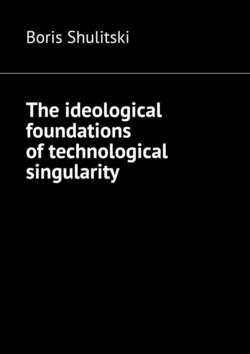Читать книгу The ideological foundations of technological singularity - Boris Shulitski - Страница 9
Chapter 1 Basic Axiomatics
1.5 Structure as philosophical category
ОглавлениеPhilosophical categories are the result of knowledge, the synthesis of the cognition experience and practice of the entire previous history of mankind. These are the key points of knowledge, the “steps” of the thinking approaching the essence of things. In their content, as already mentioned, they reflect the existing reality, properties and relations of the objective world outside us.
The new categories of dialectics included in the scope of philosophical categories in the 20th century, are the concepts of “structure”, “element” and their combination – the system (systematicity) (34, 45). This means that there has taken place an awareness of these concepts as universal ways of the human relation to the world, as general and essential properties of objective reality.
An element is a philosophical category that characterizes a relatively independent part of the whole, an object that is a part of a particular system and is considered within it as indivisible. Structure is a philosophical category characterizing the way of the elements connection in the whole, which is inherent in it and peculiar to it, characterizing the structure and internal form of the system organization, acting as a unity of stable interrelations between its elements, and the laws of these interrelations.
In the 20th century, the development of philosophical thought led to the conscious understanding that structural property (systematicity) is an essential element, an attribute of all real-life objects and systems. There can be no bodies in the world without a structure, without a certain internal organization (system). Thanks to the variety of structural levels of matter, each material system is polystructural. For example, society has an economic structure, a political structure, and others. In systems of nature, a certain structure of objects corresponds to each structural level of matter (42, 462).
Thus, structural properties (systemicity) are the universal inherent characteristic of the matter. Movement (development), space, time, structure are the forms of the matter existence. Matter is inconceivable outside its structural properties, as it is inconceivable outside the space, outside the time, outside its development, change.
One of the main requirements of dialectical logic, of the dialectical thinking method is the haecceity of truth. Dialectical logic requires specification of the matter (objective reality) properties when analyzing a particular phenomenon or process. Taking into account structural properties as those inherent in the objective reality, the haecceity of truth requires specification of the structural level, in relation to which a certain phenomenon or a certain process is considered,, that is, reasoning about objective reality outside structural levels, outside structural properties can be considered as inconsistent with the dialectical method of knowledge, as incorrect and uncertain.
Above mentioned, along with the extrapolation of the structural properties into the subjective reality, gives us reason to accept the following as the second basic axiom of the energoinformational picture of the world:
Structurality is a universal inseparable basic property of actual reality
(an axiom of structural properties)
Next, we will view the world as a hierarchical system of interrelated and interdependent structural levels of its organization. The world around us is inconceivable outside the structural levels, as it is inconceivable outsidethe space, outside time, outside development and movement.
As a part of the axiomatic approach, this provision is accepted as one of the starting points for further general scientific constructions and does not require any detailed substantiation of its truth. The criterion of truth will be practice itself, the correlation of the conclusions made in the context of the theory, which is built on the database of axioms, with the actual processes in the surrounding world, its heuristic and prognostic abilities to serve as a matrix of scientific search for fundamentally new properties, phenomena, processes, theories and applied innovative technologies.
